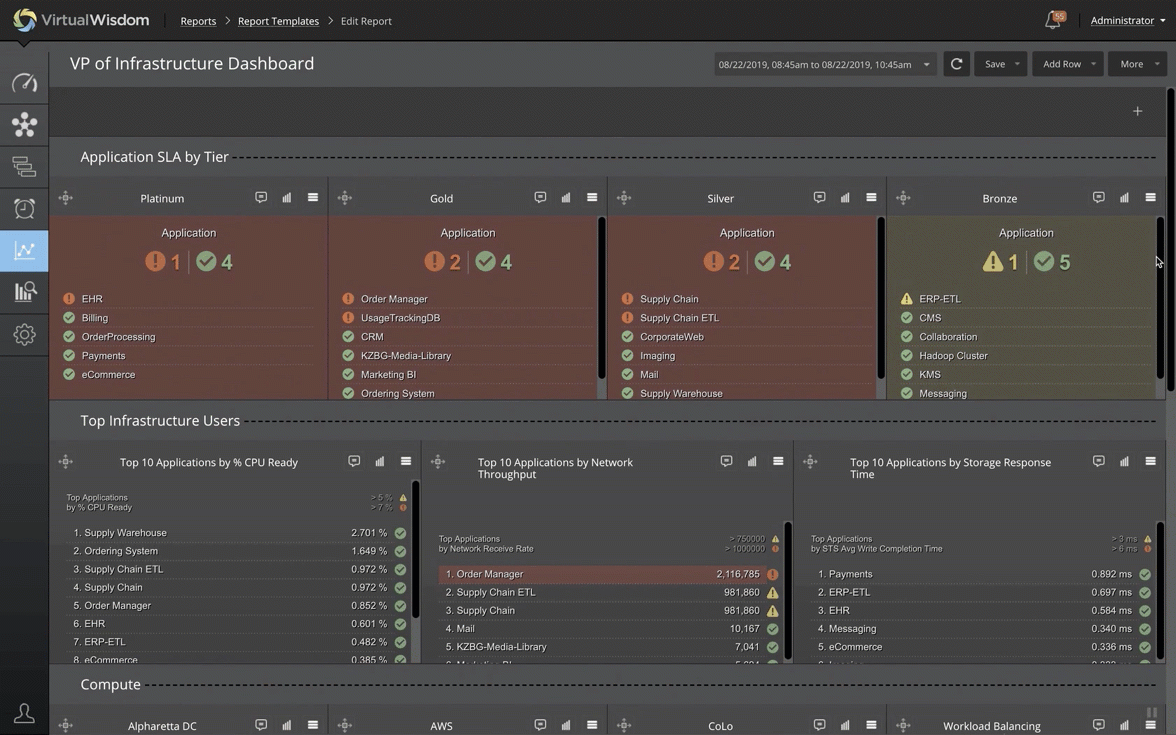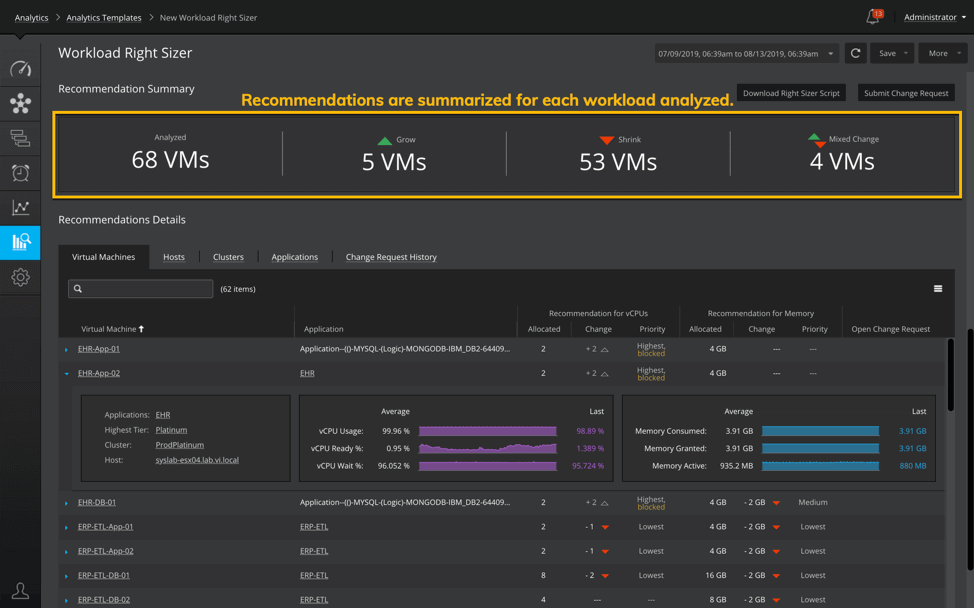September 11, 2019
Returning from VMworld 2019 a couple weeks ago, one thing was clear: we’re seeing a convergence of IT Operations and DevOps in the marketplace, and with that, an infrastructure transformation which will rely heavily on process and workload automation.
But, as we move more and more towards the automated datacenter (private and/or public), it’s important to keep in mind two critical components to make automation successful: data and governance.
Take, for example, a compute environment that is hosting multiple applications, with different levels of importance to the business. This compute environment has a finite number of resources which are contended for by all the applications it supports.
In a perfect scenario, every application would get exactly what it needs, when it needs it, with no contention from others. But, since compute infrastructure isn’t free (no matter where it lives), compromises are made which can lead to conditions where applications must contend for resources.
Or, perhaps more commonly, there are changes in application behavior which necessitate a re-evaluation of the resources it needs to effectively run and provide value to the business.
When this happens, one should consider the following:
- How do I properly resize resources for my application to meet business demand while being cost-conscious?
- How do I know I’m making the right changes?
- Can I automate the changes to minimize people, application, and business impact?
- How do I keep a record of what changes I’ve made for future reference?
Fortunately, with VirtualWisdom 6.2, Virtual Instruments helps you answer these questions.

You just saw Workload Right Sizer in action, but let’s play out the scenario in more detail below to see how it works.
VirtualWisdom is by nature application-centric, meaning when the platform analyzes compute workloads for potential resizing, we consider the application as a whole, not just individual infrastructure components (virtual machines).
Using our Workload Right Sizer analytic, users are able to ask VW to analyze an application to see if compute resources (CPU, memory) should be resized to improve performance (size up) and/or cost (size down).
Along with the recommendations, VirtualWisdom provides the reasons (data) behind the decisions it made, so users are able to understand the benefits of the resizing action.

Once you have the recommendations (backed by data), you have to act upon them. VW integrates directly with ServiceNow to submit the appropriate change requests for any right sizing operations you want to take.
Requests can be submitted by application, virtual machine, hypervisor, or cluster with configurable implementation dates and change windows. To make things even more streamline, we attach an implementation script to each change which performs the resource resizing (including configuration changes and power-cycling, if needed).
Integrating with ServiceNow allows us to solve three problems:
- We adhere to the change governance model of your business.
- You have a record of all changes made from VW recommendations in a common place for future review.
- We allow customers to automate at their own pace through pre-approved changes.
This is why our approach to automation is different. We start with trust, allowing customer automation to make the changes they want on their desired timeline.
And we show our work by providing the data (the why) behind our recommendations.
We’re on a journey to deliver the most customer-centric approach to automation in the industry. Road trips are always better with friends. Join us.
For a detailed discussion on our approaches to balancing compute workloads, please view our presentation at Tech Field Day Extra – VMworld 2019 (part 1, part 2, and part 3).
More resources can be found on our YouTube channel, including an additional walkthrough where VirtualWisdom provides answers (with data) for how to best balance compute workloads in your infrastructure.
To learn more about hybrid IT infrastructure management, click here, and to stay up to date on the latest and greatest in all things Virtual Instruments, be sure to follow us on Twitter, LinkedIn and Facebook.
Like what you hear and want to learn more?

James Bettencourt




